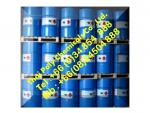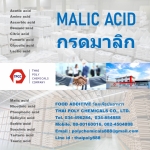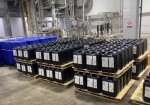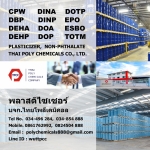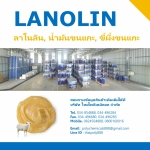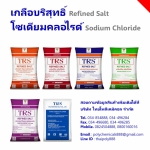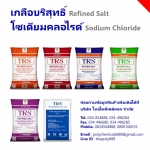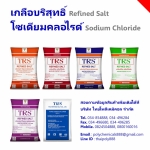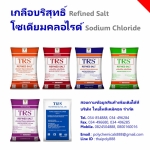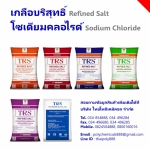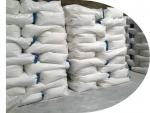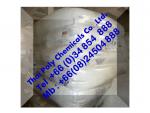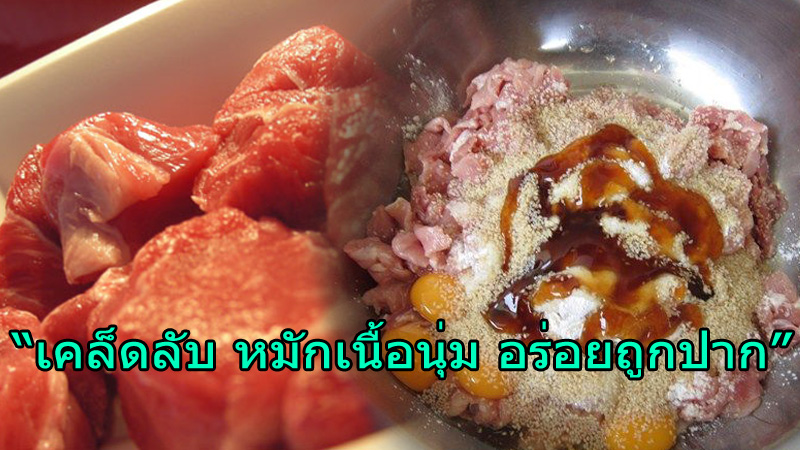Isopropanol, Isopropyl alcohol, ไอโซโพรพานอล, ไอโซโพรพิลแอลกอฮอล์ |
฿1 |
|
ชื่อผู้ประกาศ : Thailandchemicals เบอร์โทรศัพท์ : 034854888, 034496284 โทรศัพท์มือถือ : 0824504888, 0800160016 ที่อยู่ : 36/5 ม.9 ต.นาดี อ.เมืองสมุทรสาคร |
นำเข้าและจำหน่าย Isopropanol, Isopropyl alcohol, ไอโซโพรพานอล,
ไอโซโพรพิลแอลกอฮอล์ สอบถามข้อมูลเพิ่มเติมได้ที่ ฝ่ายขาย บริษัท ไทยโพลีเคมิคอล จำกัด โทรศัพท์
034854888, 034496284 มือถือ 0824504888, 0800160016 โทรสาร 034854899, 034496285
ไอโซโพรพานอล, Isopropanol, ไอโซโพรพิลแอลกอฮอล์,
Isopropyl alcohol, ไอพีเอ, IPA
ชื่อ ไอโซโพรพิลแอลกอฮอล์ (Isopropyl alcohol)
ชื่ออื่น Isopropanol, IPA, 2-Propanol,
Propan-2-ol, Dimethyl carbinol, Rubbing alcohol
สูตรโมเลกุล C3H8O น้ำหนักโมเลกุล 60.1 CAS
Number 67-63-0 UN Number 1219ไอโซโพรพิลแอลกอฮอล์ (isopropyl alcohol) เป็นแอลกอฮอล์ชนิดหนึ่ง
มีราคาถูก มีคุณสมบัติฆ่าเชื้อโรคได้ (disinfectant) จึงถูกใช้ในการทำความสะอาด
บางครั้งอาจเรียกว่า แอลกอฮอล์เช็ดทำความสะอาด (rubbing alcohol) ก็ได้ สามารถ พบไอโซโพรพิลแอลกอฮอล์ในน้ำยาทำความสะอาด
น้ำยาฆ่าเชื้อ สูตรต่างๆ ทั้งที่ใช้ในโรงพยาบาล ตามบ้าน และตามโรงงานต่างๆ
มีกลิ่นเฉพาะตัว ระเหยได้ง่าย ใช้ผสมในน้ำยาล้างเล็บ กาว น้ำมันชักเงา สี
และใช้เป็นยาฆ่าเชื้อโรค เป็นสารตั้งต้นสำหรับผลิตอะซีโตน,Isopropyl alcohol is a chemical
compound with the molecular formula C3H8O or C3H7OH. It is a colorless,
flammable chemical compound with a strong odor. It is the simplest example of a
secondary alcohol, where the alcohol carbon atom is attached to two other
carbon atoms sometimes shown as (CH3)2CHOH. It is a structural isomer of
propanol. Isopropyl alcohol is denatured for certain uses, in which case the
NFPA 704 rating is changed to 2,3,1. Isopropyl alcohol is miscible in water,
alcohol, ether and chloroform. It will dissolve ethyl cellulose, polyvinyl
butyral, many oils, alkaloids, gums and natural resins.[3] It is insoluble in
salt solutions. Unlike ethanol or methanol, isopropyl alcohol can be separated
from aqueous solutions by adding a salt such as sodium chloride, sodium
sulfate, or any of several other inorganic salts, since the alcohol is much
less soluble in saline solutions than in salt-free water. The process is
colloquially called salting out, and causes concentrated isopropyl alcohol to
separate into a distinct layer.Isopropyl alcohol forms an
azeotrope with water, which gives a boiling point of 80.37 oC and a composition
of 87.7 wt% (91 vol%) isopropyl alcohol. Water-isopropyl alcohol mixtures have
depressed melting points. It has a slightly bitter taste, and is not safe to
drink.Isopropyl alcohol becomes
increasingly viscous with decreasing temperature. At temperatures below ?70 ?C Isopropyl alcohol resembles maple syrupin viscosity. Isopropyl alcohol has a maximum absorbance at 204 nm in an ultraviolet-visible
spectrum.Uses
In 1990, 45 thousand tonnes of
isopropyl alcohol were used in the United States. The vast majority of
isopropyl alcohol was used as a solvent for coatings or for industrial
processes. Isopropyl alcohol in particular is popular for pharmaceutical
applications, presumably due to the low toxicity of any residues. Some
isopropyl alcohol is used as a chemical intermediate. Isopropyl alcohol may be
converted to acetone, but the cumene process is more significant. In that year,
a tiny fraction (5.4 tonnes) was consumed for household use and in personal
care products. It is also used as a gasoline additive. Solvent
Isopropyl alcohol dissolves a wide
range of non-polar compounds. It also evaporates quickly and is relatively
non-toxic, compared to alternative solvents. Thus it is used widely as a
solvent and as a cleaning fluid, especially for dissolving oils. Together with
ethanol, n-butanol, and methanol, it belongs to the group of alcohol-based
solvents, about 6.4 million tonnes of which were utilized worldwide in 2011.Examples of this application
include cleaning electronic devices such as contact pins (like those on ROM
cartridges), magnetic tape and disk heads (such as those in audio and video
tape recorders and floppy disk drives), the lenses of lasers in optical disc
drives (e.g. CD, DVD) and removing thermal paste from heatsinks and IC packages
(such as CPUs. Isopropyl alcohol is used in keyboard, LCD and laptop cleaning,
is sold commercially as a whiteboard cleaner, and is a strong but safer
alternative to common household cleaning products. It is commonly used to clean
prepared optical fibers just before splicing. It is used to clean LCD and glass
computer monitor screens (at some risk to the anti-reflection coating on some
screens[citation needed]), and used to give second-hand or worn non-vinyl
phonograph records newer-looking sheen. It is effective at removing Hot-Melt
Adhesive from a large variety of surfaces. Isopropyl alcohol should not be used
to clean vinyl records as it may leach plasticizer from the vinyl making it
more rigid[citation needed]. It is effective at removing residual glue from
some sticky labels although some other adhesives used on tapes and paper labels
are resistant to it. It can also be used to remove stains from most fabrics,
wood, cotton, etc. In addition it can also be used to clean paint or other oil
based products so that they may be reused, commonly known as
"repainting." It is used as a wetting agent in the fountain solution
used in lithographic printing, and often used as a solvent for French polishing
shellac used in cabinet making.Intermediate
Isopropyl alcohol is esterified to
give isopropyl acetate, another solvent. It reacts with carbon disulfide and
sodium hydroxide to give sodium isopropylxanthate, a herbicide and an ore
flotation reagent. Isopropyl alcohol reacts with titanium tetrachloride and
aluminium metal to give titanium and aluminium isopropoxides respectively, the
former a catalyst, and the latter a chemical reagent. This compound may serve
as a chemical reagent in itself, by acting as a dihydrogen donor in transfer
hydrogenation.Medical
Disinfecting pads typically
contain a 60?70% solution of isopropyl alcohol in water. A 75% v/v solution in
water may be used as a hand sanitizer.[14] Isopropyl alcohol is used as a
water-drying aid for the prevention of otitis externa, better known as
swimmer's ear.Early uses as an anesthetic
Although isopropanol can be
technically used for anesthesia, its many negative drawbacks prohibit this use.
Isopropanol can also be used similar to ether as a solvent[16] or anesthesia by
inhaling the fumes or orally. Early uses included using the solvent as general
anesthesia for small mammals and rodents by scientists and some veterinarians.
However, it was soon discontinued as many complications arose including
respiratory irritation, internal bleeding, visual and hearing problems. In rare
cases, respiratory failure leading to death in animals was observed. Like
ether, isopropanol is also very volatile and due to their medical
complications, both are prohibited to be used for either human or animal uses,
either lab or medical unless approved by IACC.[citation neededAutomotive
Isopropyl alcohol is a major
ingredient in "gas dryer" fuel additives. In significant quantities,
water is a problem in fuel tanks, as it separates from the gasoline, and can
freeze in the supply lines at cold temperatures. It does not remove water from
gasoline; rather, the alcohol solubilizes water in gasoline. Once soluble,
water does not pose the same risk as insoluble water as it will no longer
accumulate in the supply lines and freeze. Isopropyl alcohol is often sold in
aerosol cans as a windshield de-icer. Isopropyl alcohol is also used to remove
brake fluid traces from hydraulic braking systems, so that the brake fluid
(usually DOT 3, DOT 4 or mineral oil) does not contaminate the brake pads,
which would result in poor braking.Laboratory
As a biological specimen
preservative, isopropyl alcohol provides a comparatively non-toxic alternative
to formaldehyde and other synthetic preservatives. Isopropyl alcohol solutions
of 70?99% are used to preserve specimens. Isopropyl alcohol is often used in
DNA extraction. It is added to a DNA solution in order to precipitate the DNA
into a 'pellet' after centrifuging the DNA. This is possible because DNA is
insoluble in isopropyl alcohol.Isopropanol (IPA) is one of the
most widely used solvents in the world; also used as a chemical intermediate.
See Product Uses.IPA exposure is possible in both industrial
and consumer applications. Occupational exposure limits have been established
to control the allowable amount of exposure in workplace settings. Consumer
exposure, generally infrequent and short in duration, is also highly dependent
upon the conditions under which IPA is used. See Exposure Potential.IPA does not cause adverse health or
environmental effects at levels typically found in the workplace or in the
environment.Flammable with high vapor pressure; use good
ventilation and avoid all ignition sources. See Physical Hazard Information.The largest use for IPA is as a
solvent. The second largest use is as a chemical intermediate. IPA is also
found in many everyday products such as paints, inks, general-purpose cleaners,
disinfectants, room sprays and windshield deicing agents.IPA is commonly used in
nitrocellulose-based lacquers and thinners for wood finishing, in adhesives,
pharmaceuticals, cosmetics and toiletries, disinfectants, rubbing compounds,
and lithography. It is also used as an ingredient in cleaners and polishers, as
a chemical intermediate, and as a dehydrating agent and extractant.
สอบถามข้อมูลเพิ่มเติมได้ที่
ฝ่ายขายThai Poly Chemicals Co., Ltd.
บริษัท ไทยโพลีเคมิคอล จำกัด
ที่อยู่36/5 ม.9 แขวง/ตำบลนาดี เขต/อำเภอเมืองสมุทรสาคร จังหวัดสมุทรสาคร รหัสไปรษณีย์74000
Tel.: 034854888,
034496284
Fax.: 034854899,
034496285
Mobile: 0824504888,
0800160016
Website :
www.thaipolychemicals.comEmail1 : thaipolychemicals@hotmail.com
Email2 : info@thaipolychemicals.com
ไอพีเอไอโซโพรพิลแอลกอฮอล์IPAไอโซโพรพานอลalcoholIsopropylIsopropanol

